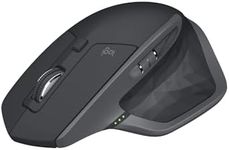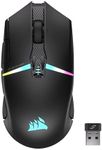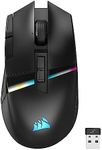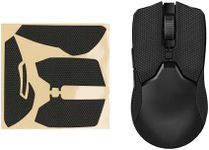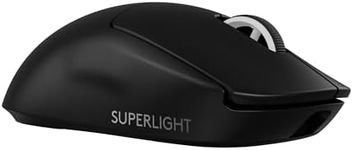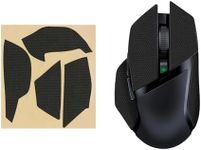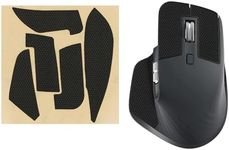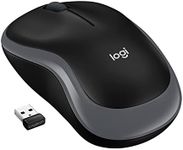Buying Guide for the Best Wireless Mouse
Choosing the right wireless mouse can significantly enhance your computing experience, whether you're using it for work, gaming, or casual browsing. The key is to find a mouse that fits comfortably in your hand, has the right features for your needs, and offers reliable performance. Consider how you plan to use the mouse, as this will guide you in selecting the most suitable specifications.ErgonomicsErgonomics refers to how comfortably a mouse fits in your hand and how it supports your wrist and fingers during use. This is important because a well-designed ergonomic mouse can reduce strain and prevent discomfort during long periods of use. Mice come in various shapes and sizes, including ambidextrous designs and those specifically for right or left-handed users. To choose the right one, consider the size of your hand and how you grip the mouse—whether it's a palm, claw, or fingertip grip. Try different shapes to see which feels most comfortable for extended use.
DPI (Dots Per Inch)DPI measures the sensitivity of the mouse, indicating how much the cursor moves on the screen in response to your physical movement. A higher DPI means the cursor moves further with less physical movement, which can be beneficial for tasks requiring precision, like graphic design or gaming. Mice typically range from 400 to over 16,000 DPI. For general use, a DPI between 800 and 1600 is usually sufficient. If you need more precision or speed, look for a mouse with adjustable DPI settings so you can customize it to your needs.
Battery LifeBattery life is crucial for wireless mice, as it determines how long you can use the mouse before needing to recharge or replace the batteries. Some mice use rechargeable batteries, while others use disposable ones. Battery life can range from a few weeks to several months, depending on usage and the mouse's power-saving features. If you use your mouse frequently, look for one with a long battery life or convenient charging options, such as a USB-C port or a charging dock.
ConnectivityWireless mice connect to your computer via Bluetooth or a USB receiver. Bluetooth mice are convenient because they don't require a USB port, making them ideal for laptops with limited ports. However, they may have slightly more latency than those using a USB receiver. USB receiver mice often offer a more stable connection and lower latency, which is important for gaming or precise tasks. Consider your device's compatibility and how you plan to use the mouse when choosing the connectivity option.
Programmable ButtonsProgrammable buttons allow you to customize the mouse's functionality by assigning specific actions or macros to the buttons. This feature is particularly useful for gamers or professionals who use complex software, as it can streamline workflows and improve efficiency. Mice can have anywhere from two to over ten buttons. If you need quick access to multiple functions, look for a mouse with several programmable buttons and easy-to-use software for customization.
WeightThe weight of a mouse can affect how it feels and performs during use. A lighter mouse is easier to move quickly, which can be advantageous for fast-paced gaming or tasks requiring rapid movements. Conversely, a heavier mouse can provide more control and precision, which some users prefer for detailed work. Some mice offer adjustable weights, allowing you to customize the feel to your preference. Consider what feels most comfortable and natural for your typical usage.

